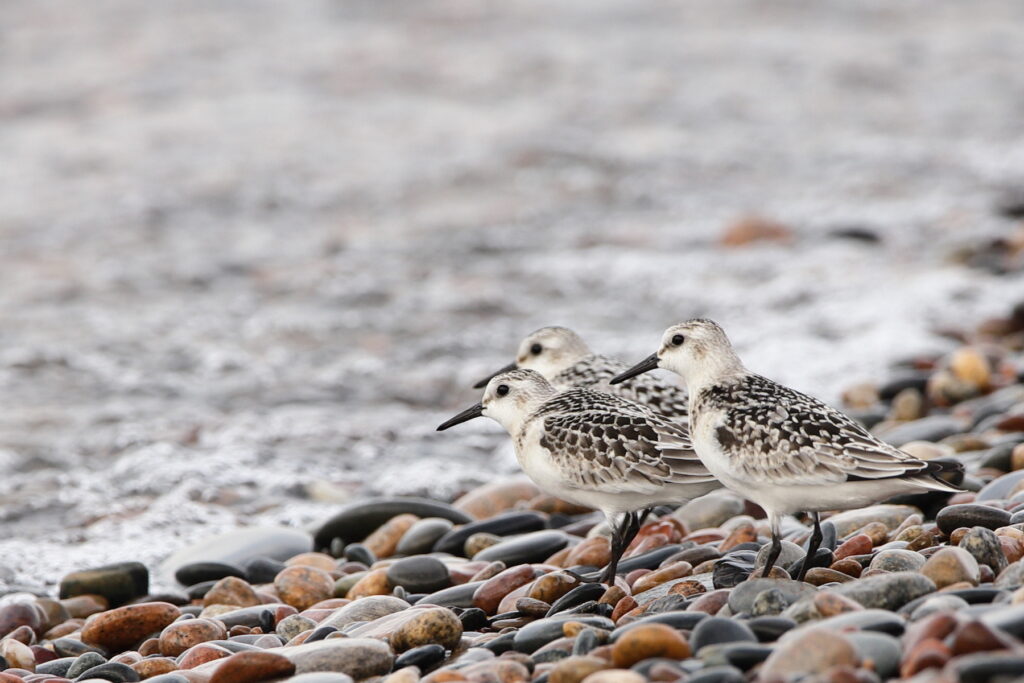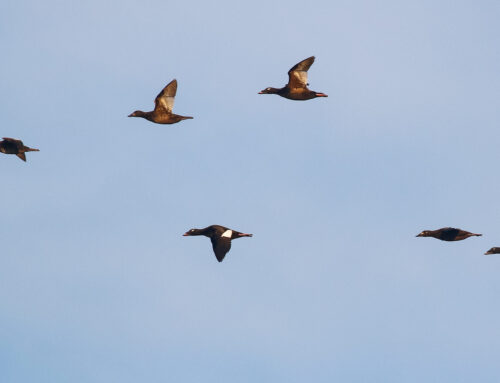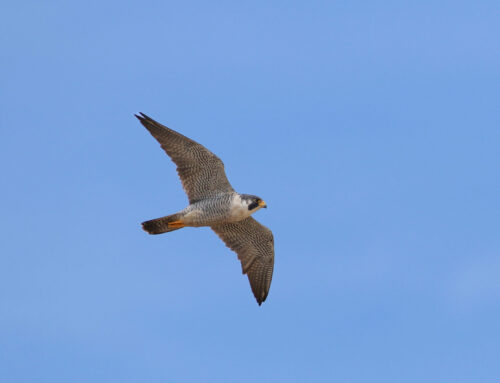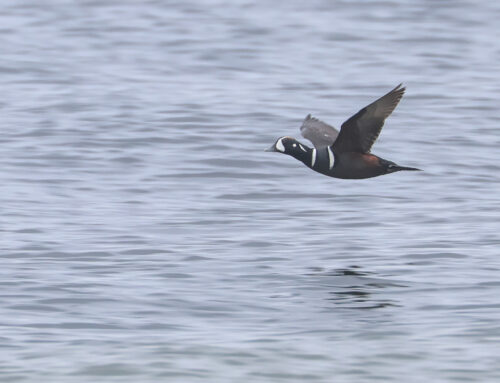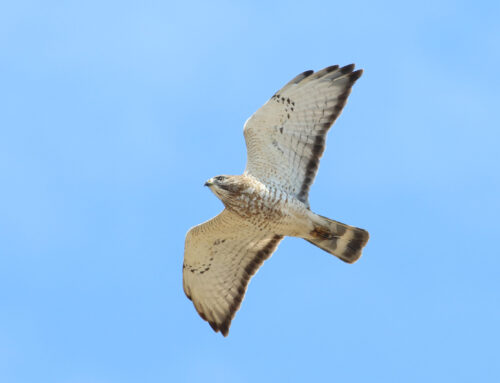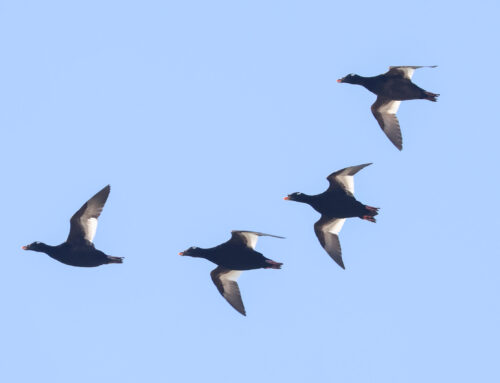This past week at the waterbird count has represented the longest stretch of favorable migration conditions I’ve ever experienced at WPBO: there have been no sustained periods of strong north winds; no lasting fog. Not surprisingly, the birding has been favorable, too!
It feels like we’re on the cusp of the peak scoter, Long-tailed Duck, and Bonaparte’s Gull flights. All of these are spring events I look forward to from the first day of spring waterbird count. The scoter flights come as dense, dark smudges that seem to crawl out from the curvature of the earth as they advance towards the Point. May 10 was my first triple-digit White-winged Scoter day, and May 11, my first small push of Surf Scoters, which included a wonderful flock of 13 that landed just offshore the tip and made delightful gurgling noises as part of their courtship display. Bonaparte’s Gulls and Long-tailed Ducks have also had triple-digit days. Last spring, the peak for White-winged Scoter was May 20 (606 birds), Long-tailed Duck was May 23 (857), and Bonaparte’s Gull was May 14 (706 birds.) So we’ve got a lot to look forward to in the next week or so!
A favorite spring happening of mine at WPBO — for that matter, anywhere — are the night flights out at the waterbird count. Does it get any better than standing at the transitions of land and water; light and dark; watching birds move towards summer from winter? The night flights are just barely beginning to happen right now, adding more to my cumulative sleep deficit than to my cumulative species tallies. During the wake of a strong thunderstorm that passed over the Point on the evening of May 10, I enjoyed 39 Red-throated Loons (and lots of lightning over Batchawana Bay, Ontario). On the night of May 11, I had about a hundred Bonaparte’s Gulls before it got too dark to see them — and even then, I could hear them calling.
Waterbirds aside, we had a really spectacular procession of Northern Harriers come down the beach on May 10 — in the first hour of the count, I observed more than 60 crossing the lake, and by the day’s end had seen 90! Continuing with the raptor theme, I watched a Rough-legged Hawk regurgitate a pellet while it was on the wing. I later found the pellet and was surprised to find avian remnants inside: Rough-legs consume far more rodents than they do birds, with small mammals making up at least 80% of their prey. In spring migration, however, I guess we all eat what we have to in order to survive. I know I’m definitely in that stage of my own field season.
Like everyone else, we’ve been excited by all our new species arrivals. I love rolling up to the parking lot in the morning and being greeted with some first-of-season birdsong upon exiting my truck. Over the last few days, we’ve had our first-of-season Eastern Whip-poor-will, Chimney Swift, Semipalmated Plover, Least Sandpiper, Great Crested Flycatcher, Eastern Kingbird, and Bobolink, and at least 14 warbler species were observed at the Point in the last couple days!
The more unusual species we’ve been graced with recently have included Great Egret (May 12), American White Pelican (a flock of 11 on May 8), Marbled Godwit (May 9), and Red-bellied Woodpecker, Wood Thrush, and Prairie Warbler (May 11). The Prairie Warbler was found by Elliot Nelson.
As always, thanks for reading!
~ Alison Világ
2022 Spring Waterbird Counter
Featured photo: White-winged Scoters on night flight. Photo by Alison Vilag
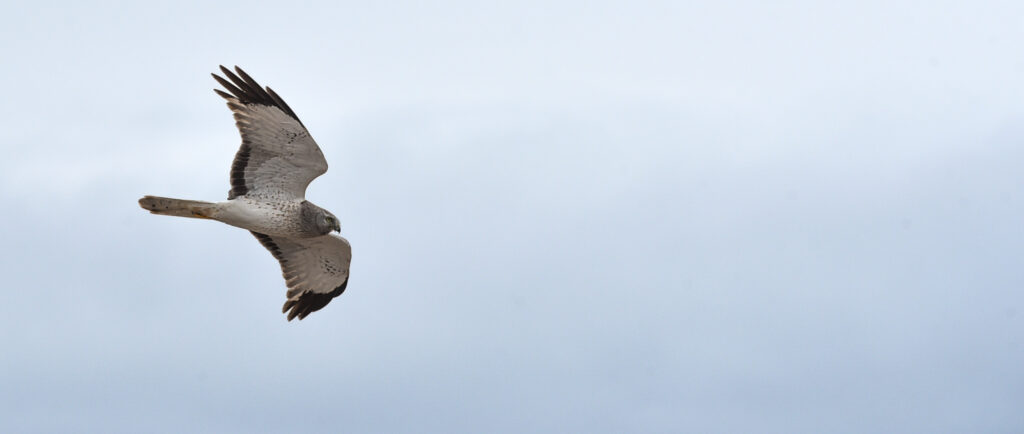
A male Northern Harrier courses the beach at Whitefish Point. Photo by Alison Vilag
Support WPBO’s Research During Birdathon on May 28
Our skilled team of bird counters and volunteers at Whitefish Point Bird Observatory will set out on a mission to count as many bird species as possible in one day on May 28, 2022, as part of an annual fundraising event supporting the amazing work happening at WPBO! In 2021, a whopping 152 species were counted and the event brought in $6,826.65! Let’s hope this year is just as successful.
This is where you come in! Because our work is 100% donor-funded, Birdathon provides all of our supporters with an opportunity to make a significant impact on our work by making a pledge or direct donation to Birdathon (even after the event). Any amount is helpful, but have some fun with it and consider letting your donation or pledge be inspired by a per-species amount.
Learn more about Birdathon and find links to donate at wpbo.org/birdathon.
Thank you so much to everyone who supports the work being done at WPBO!
